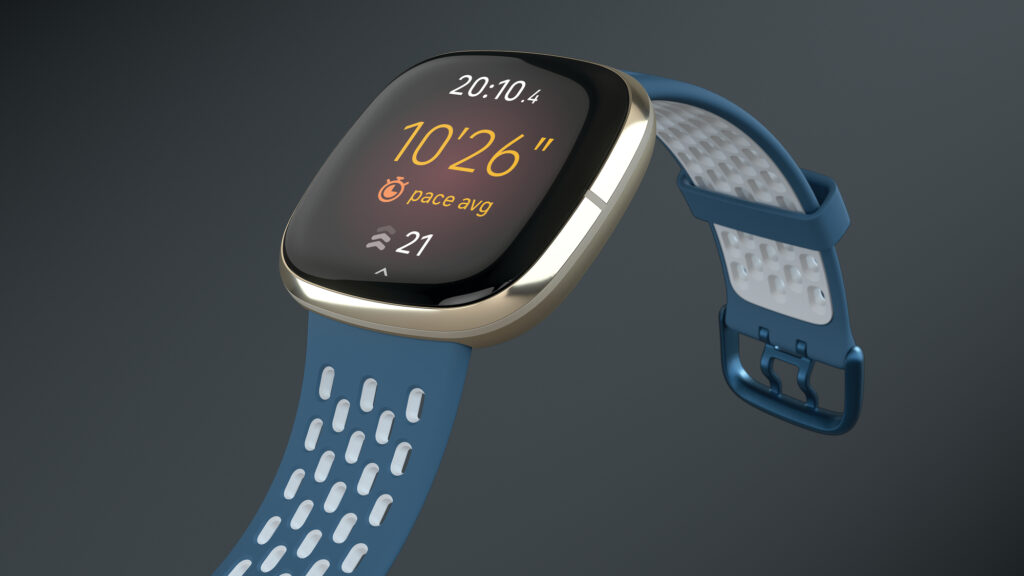Smartwatches are most certainly no longer a fad. These days, more people are purchasing these devices — and for good reason. Aside from acting as a useful extension for your smartphone, smartwatches can also help you monitor your health thanks to their various fitness sensors. The smartwatch industry is expected to reach the 6-trillion rupee mark this 2021, which further proves how keen the general public is for improving their health and lifestyles through these nifty tools.
In this post, we’ll review one of the latest offerings from wearable giant Fitbit: the Fitbit Sense.
Fitbit Sense: Display and Design
One thing that you can expect from Fitbit’s fitness trackers and wearables is that these will always be small and light. The Fitbit Sense is comfortable to wear both day and night — even though it’s made from stainless steel. The Fitbit Sense is almost the same size as another one of Fitbit’s bestsellers, the Fitbit Versa 2. But upon close inspection, the Sense has more rounded sides. Another thing to note about the Fitbit Sense’s design is that it has a small touch-sensitive solid-state sensor that functions as a button, and this slightly buzzes whenever pressed by the user.
The Fitbit Sense also comes with an AMOLED panel, which allows it to have a high-resolution, bright, and crisp display. You can also set the screen to ‘always-on’, although this can drastically reduce the Fitbit Sense’s battery life to only two days.
Fitbit Sense: Health Features
The Fitbit Sense is set apart from other Fitbit offerings and smartwatches from other brands by its ambitious health sensors. For one, it has an EDA sensor that can give you a quantified result of your stress level based on your heart rate, sleep, and activity data. After determining your current stress level, the Fitbit Sense will ask you how you’re feeling and give you the option to take a meditation session to help you relax.
Another sensor that makes the Fitbit Sense stand out from its competitors is its ECG sensor. This allows the device to check your heartbeat for signs of atrial fibrillation and any irregular activity. The Fitbit Sense is the third smartwatch in the market that has been approved by the FDA for its ECG app. Installing this kind of technology in such a small device is made possible by its rigid-flex PCBs, which allows for increased functionality in a more lightweight design. This advancement in PCB design also allows the Fitbit Sense to monitor your blood oxygen levels with its SpO2 sensor. Unlike traditional pulse oximeters, the SpO2 that comes with the Fitbit Sense shines a light into your skin and looks for reflections that bounce back in order to measure your blood oxygen levels.
Fitbit Sense: Sleep Monitoring
The Fitbit Sense’s sleep tracking feature works just as well as older Fitbit models. It will show you a detailed breakdown of your sleep stages, and give you an overall sleep score every morning by looking at your heart rate and estimated oxygen variation.
Fitbit Sense: As a Smartwatch
If you’re looking for a full-fledged smartwatch, you’re going to want to skip the Fitbit Sense. While it has a ton of great fitness features, it’s not capable enough to let you remotely control most of your smart home devices, make untethered phone calls, or even check your bank balance. However, the Fitbit smartwatch app store does have third-party apps for popular services and establishments such as Strava, Starbucks, and Yelp.
The Fitbit Sense also allows you to control your music from the device as it can store playlists from Spotify and Deezer. However, it can’t download songs and won’t allow you to play music offline. In addition, Alexa is also built into the Fitbit Sense, so you can call on Amazon’s voice assistant anytime you want. All in all, the Fitbit Sense covers most of the basic smartwatch functions, but if you’re not much of a fitness or health bug you’ll do better with other smartwatches such as the Apple Watch or the Samsung Galaxy Watch.
Fitbit Sense: Battery Life
Fitbit claims that the sense has a 6-day battery life (if the GPS is inactive). This is an astounding feat, as most smartwatches only last 1-2 days on a single charge. However, this is also not that surprising as the Fitbit Sense’s features are mostly focused on health and fitness. If you’re looking for a smartwatch that you don’t have to charge every day, you’re going to love the Fitbit Sense.
Fitbit Sense: Final Verdict
From our experience, the Fitbit Sense is the best smartwatch for those who want to stay on top of their health and fitness, but want more than just a simple fitness tracker. The various sensors that it has can make up for the areas where it falls short, such as responsiveness and music storage. Overall, the Fitbit Sense is a great substitute for more well-rounded smartwatches such as the Apple Watch 6 or Samsung Galaxy Watch Active 3.
For more fitness technology reviews and insights, be sure to check our other blog posts here on MeDepZa.
